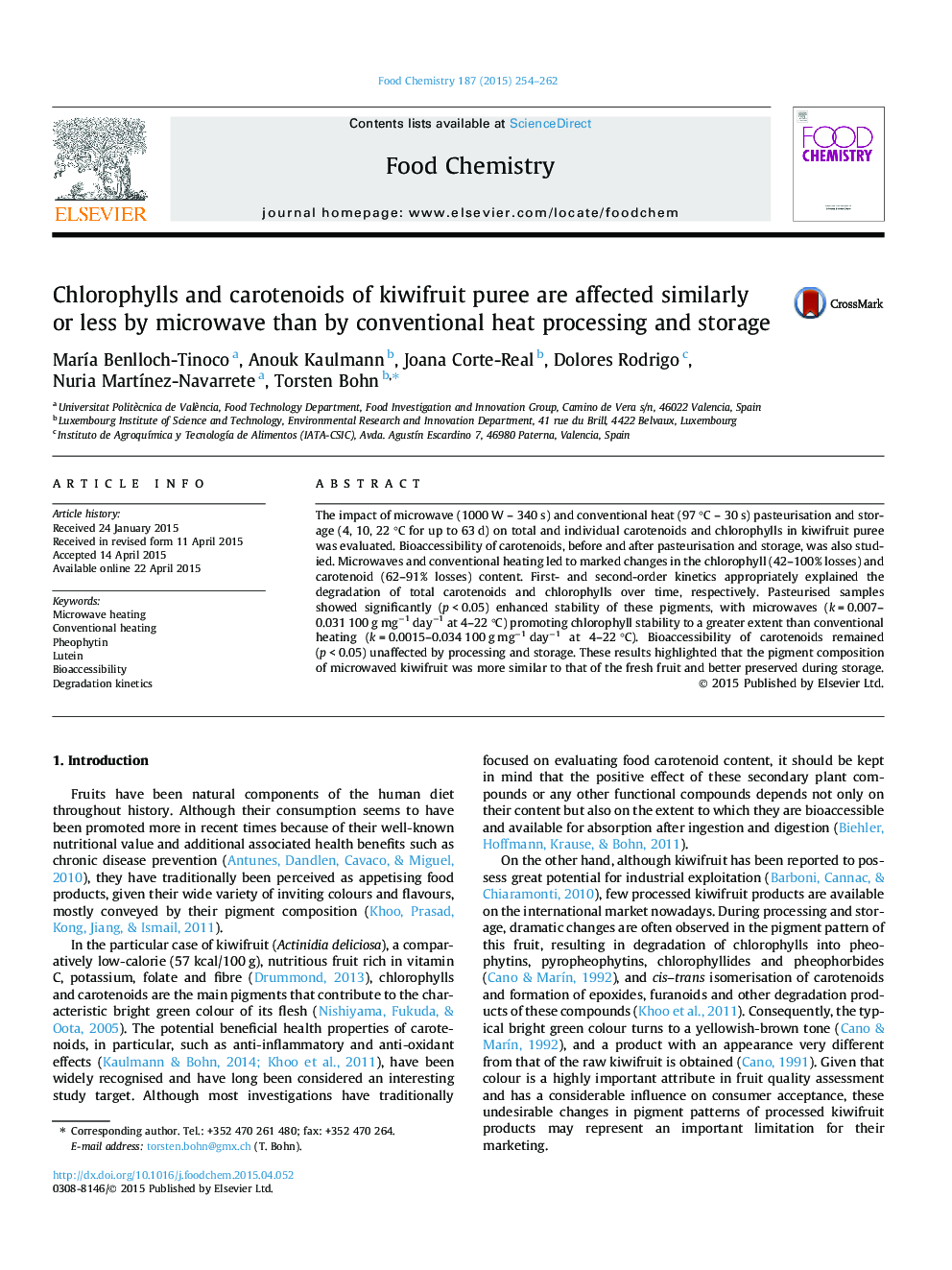| Article ID | Journal | Published Year | Pages | File Type |
|---|---|---|---|---|
| 7591046 | Food Chemistry | 2015 | 9 Pages |
Abstract
The impact of microwave (1000 W - 340 s) and conventional heat (97 °C - 30 s) pasteurisation and storage (4, 10, 22 °C for up to 63 d) on total and individual carotenoids and chlorophylls in kiwifruit puree was evaluated. Bioaccessibility of carotenoids, before and after pasteurisation and storage, was also studied. Microwaves and conventional heating led to marked changes in the chlorophyll (42-100% losses) and carotenoid (62-91% losses) content. First- and second-order kinetics appropriately explained the degradation of total carotenoids and chlorophylls over time, respectively. Pasteurised samples showed significantly (p < 0.05) enhanced stability of these pigments, with microwaves (k = 0.007-0.031 100 g mgâ1 dayâ1 at 4-22 °C) promoting chlorophyll stability to a greater extent than conventional heating (k = 0.0015-0.034 100 g mgâ1 dayâ1 at 4-22 °C). Bioaccessibility of carotenoids remained (p < 0.05) unaffected by processing and storage. These results highlighted that the pigment composition of microwaved kiwifruit was more similar to that of the fresh fruit and better preserved during storage.
Related Topics
Physical Sciences and Engineering
Chemistry
Analytical Chemistry
Authors
MarÃa Benlloch-Tinoco, Anouk Kaulmann, Joana Corte-Real, Dolores Rodrigo, Nuria MartÃnez-Navarrete, Torsten Bohn,
